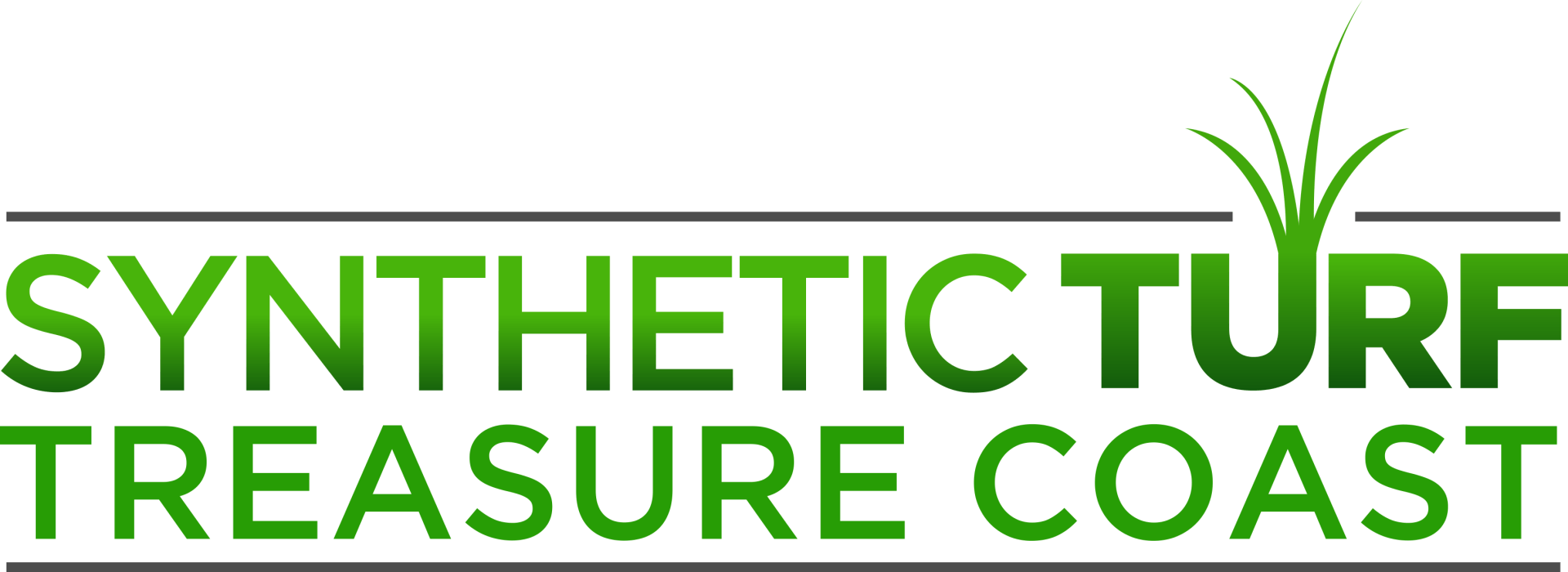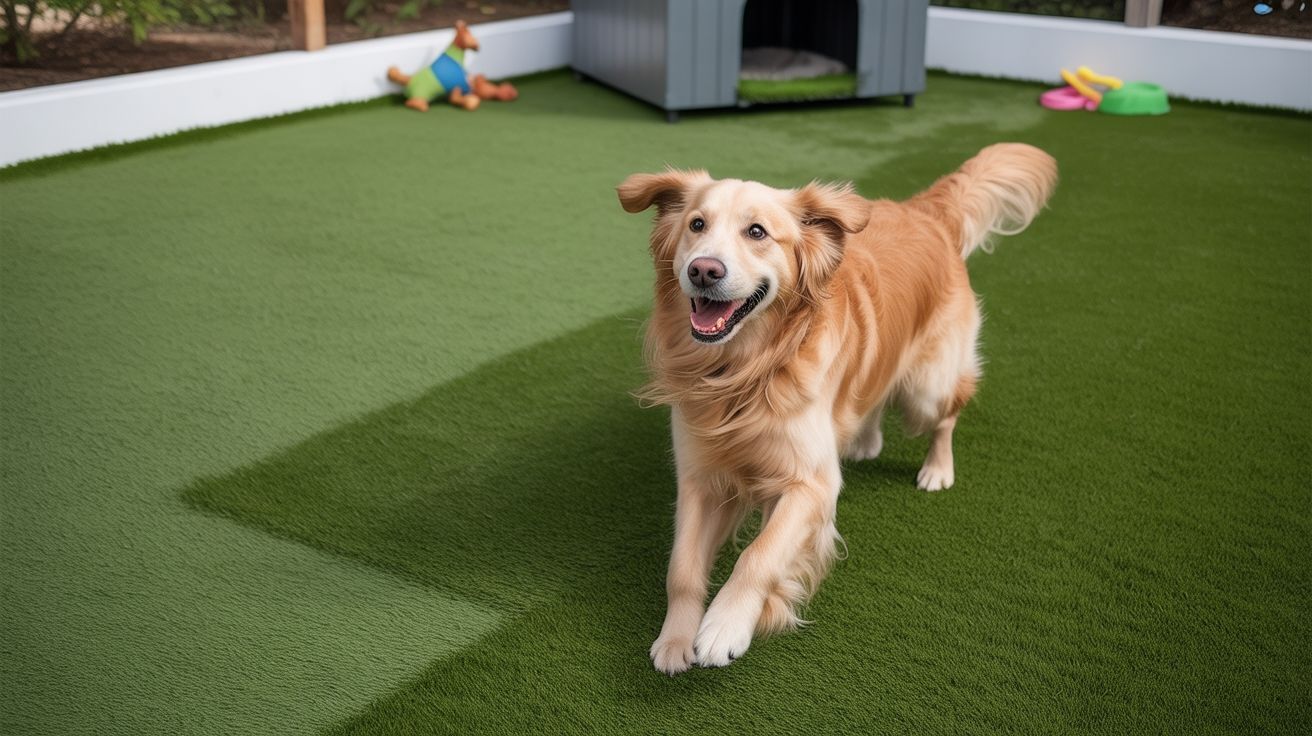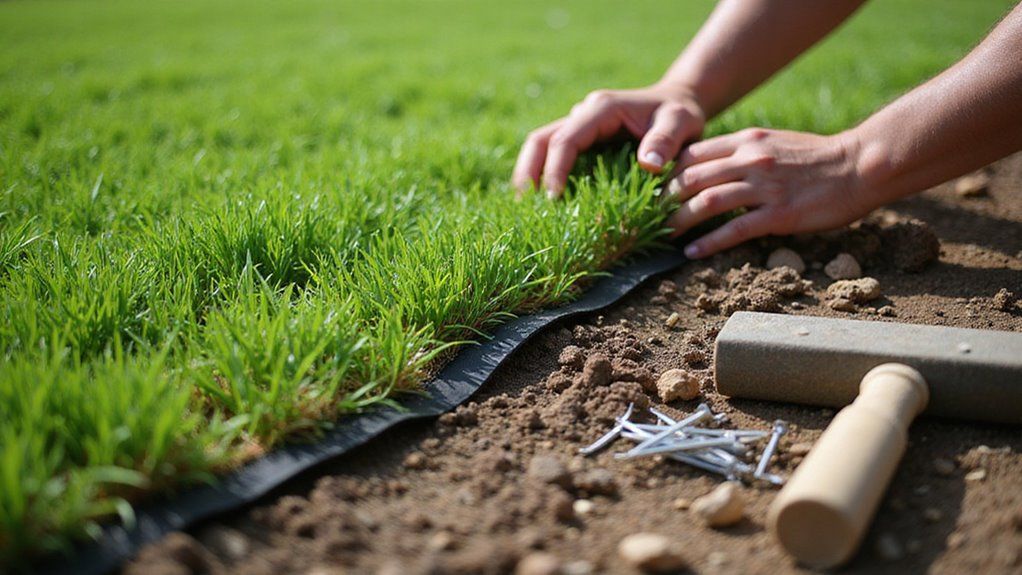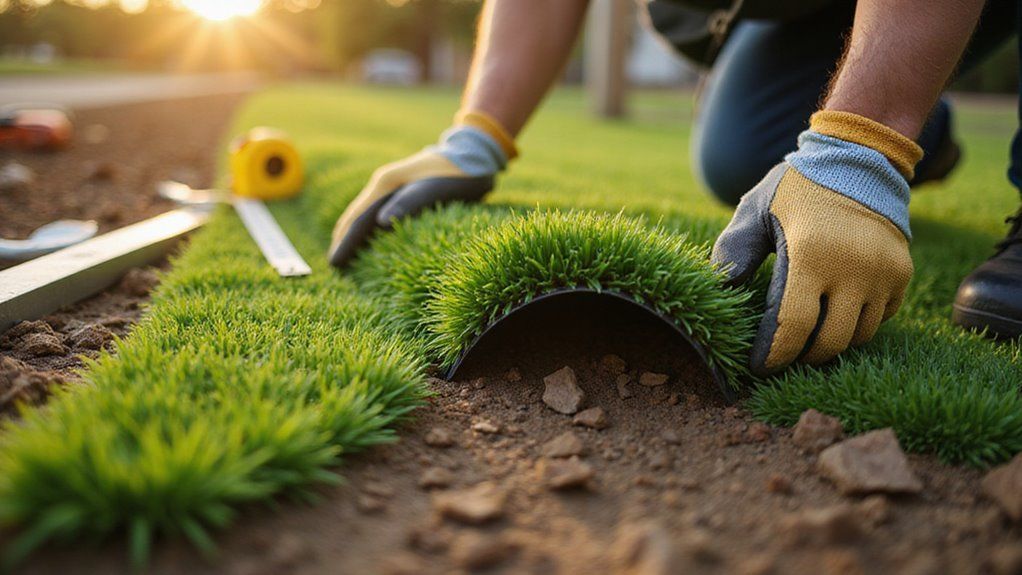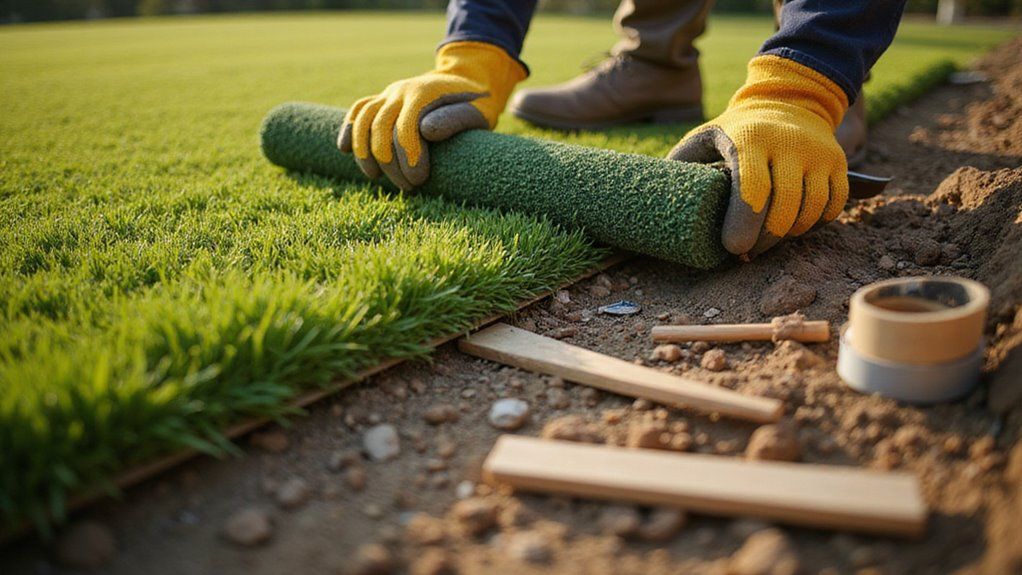Do I Need to Put Anything Under Artificial Grass?

Many people think laying artificial grass is simple. They believe you just roll it out and enjoy a green lawn. But ignoring what goes underneath can cause big problems later.
If you skip the right base, your lawn may flood or become lumpy. Weeds might grow through, or the grass could shift after rain. These issues can ruin your yard’s look and waste your money.
Yes, you do need to put something under artificial grass. A solid base and a weed barrier are essential for a long-lasting lawn. These layers keep your grass looking great and help it drain properly.
This blog will guide you step by step so you can avoid common mistakes and get the best results.
Key Takeaways
- Yes, a compacted base layer of crushed stone or decomposed granite is needed under artificial grass for stability and drainage.
- A weed membrane should be installed beneath the turf to prevent weed growth and pest intrusion.
- Proper leveling and compacting of the ground ensures a smooth, even surface and prevents sinking or unevenness over time.
- Drainage solutions, like permeable sub-bases and membranes, help avoid water pooling and prolong turf lifespan.
- Skipping the correct base materials and preparation can lead to poor drainage, weeds, and an uneven artificial lawn.
Understanding the Purpose of a Base Layer
A base layer is necessary under artificial grass because it provides a stable and even surface. This foundation helps the turf last longer and look better.
Without a good base, the grass may shift or become uneven. In fact, professional installers recommend selecting the right drainage materials to make sure your artificial turf performs well in all weather and remains low-maintenance.
The base layer spreads weight evenly and improves drainage. Proper drainage stops water from pooling and damaging the turf. It also stops weeds from growing through the grass.
If you skip the base layer, the turf may wrinkle or sink over time. Uneven surfaces can be unsafe and uncomfortable. Always use the right materials and methods for the best results.
It’s important to consider your types of bases for synthetic grass when installing artificial turf, as each base material—such as gravel, concrete, or asphalt—affects drainage, stability, and comfort.
Common Types of Base Materials
Common Types of Base Materials
Artificial grass needs a strong and stable base material. The right base helps with drainage and keeps the grass surface level. Each type of base material has its own benefits.
Crushed granite, also called decomposed granite, compacts well to form a solid and even base. MOT Type 1 is another popular choice because it offers good support and load-bearing capacity.
If you want better drainage, you can add sharp sand on top, but it is not stable by itself. Many installers use compacted foundation techniques to ensure the base provides the needed firmness and prevents future shifting.
Eco-friendly options like recycled aggregate or permeable grids are also available. These materials reduce environmental impact while keeping the base strong. Choosing the right base affects how long your artificial lawn lasts and how well it performs.
Some outdoor destinations with diverse habitats use specialized base materials under walkways to preserve both stability and local ecosystems.
Assessing Your Existing Ground Conditions
Assessing your ground is important before installing artificial grass. The ground’s condition decides which base material you should use. Good assessment helps your grass look better and last longer.
Check if the soil is loose or tightly packed. Loose soil may need extra compaction for stability. Compact soil usually supports the turf better. For professional results, consider consulting with knowledgeable staff assistance who can advise on preparing different soil conditions.
Look for water pooling after rain. Poor drainage can damage synthetic grass over time. If you see water collecting, you may need to fix drainage first.
Check if the ground is flat or sloped. Uneven areas can cause bumps in the turf. Level the ground to get a smooth finish.
Remove all rocks, roots, and debris. These items can damage the backing of the turf. Clean ground gives the best results for installation.
Just as impeccable service and world-class amenities ensure a quality experience at luxury retreats, careful ground assessment creates the foundation for durable and attractive artificial grass.
The Role of Weed Membranes
Weed membranes stop weeds from growing under artificial grass. They act as a physical barrier, making it hard for weeds to reach the surface. If you install a weed membrane, you reduce the risk of weeds and pests affecting your lawn.
A good membrane can block sunlight and nutrients, making it difficult for weeds to survive. It also stops insects and burrowing pests from damaging the artificial turf.
You should always place the membrane directly under the grass for best results. For those interested in environmental preservation, choosing a weed membrane also helps minimize chemical weed treatments and keeps your landscape eco-friendly.
If you want your lawn to last, choose a membrane with strong features. UV stability stops the membrane from breaking down in sunlight. Permeability allows water to drain, which prevents water from pooling.
Puncture resistance helps the membrane survive during installation. Efficient weed control keeps your turf clear of unwanted plants.
Pest prevention features help keep insects and small animals away from your lawn. Selecting a weed membrane with proper drainage not only supports quick water runoff but also protects the artificial turf’s base from water accumulation and root issues.
Preparing the Ground for Installation
Before you install artificial grass underlay, you need to clear all existing vegetation to prevent future regrowth. Next, use a landscaping rake and plate compactor to level and compact the soil, ensuring a stable sub-base.
Proper ground preparation minimizes unevenness and supports long-term underlay performance. Since some synthetic turf products use crumb rubber infill, it’s useful to be aware of regulatory bodies set limits on chemical composition for health and safety during your installation.
If you’re installing artificial grass in a rural community like Tequesta, Florida, you’ll appreciate the naturally peaceful atmosphere your new lawn can help enhance.
Clearing Existing Vegetation
Clearing existing vegetation is important before installing artificial grass underlay. Removing plants creates a stable and weed-free surface. If you leave plants, the ground may become uneven and weeds can grow.
You should take out all grass, weeds, and roots. This prevents organic material from causing future problems. Use a sod cutter or a shovel to remove vegetation at the right depth.
All debris and organic waste must be thrown away properly. This keeps your base materials clean. Check for any roots or shoots left behind that might grow through the artificial grass.
Proper ground clearing gives your installation a strong foundation. If you skip this step, your artificial grass may not last as long.
Leveling and Compacting Soil
Leveling and compacting soil creates a strong base for artificial grass. Clear all plants and debris first. Remove any large clumps and make the surface as even as possible.
A landscaping rake helps you smooth the soil. Proper leveling helps water drain well and prevents uneven ground. If the surface is bumpy, it can affect the look of your grass.
Use a plate compactor or hand tamper to press the soil firmly. A well-compacted surface means fewer problems later. If you step on the soil and your footprints barely show, it is compact enough.
Careful leveling and compaction support the next layers for your artificial grass. If you skip these steps, the installation may not last. Good preparation makes your lawn look better and last longer.
Importance of Drainage Solutions
You need effective drainage solutions beneath your artificial grass to prevent water accumulation that can lead to surface pooling and moss growth. Proper drainage also improves soil stability, reducing the risk of subsidence or uneven surfaces over time.
By addressing these factors, you'll protect both the appearance and longevity of your installation. In the same way that the diverse ecosystems at Jonathan Dickinson State Park support healthy habitats, effective drainage systems beneath your artificial grass help maintain optimum conditions for use and enjoyment.
Adequate drainage is also crucial for maintaining surface uniformity and ball behavior, ensuring the field's performance and safety align with sports requirements.
Preventing Water Accumulation
Artificial grass needs good drainage to prevent water buildup. Without proper drainage, water can damage the turf and its base. Effective drainage keeps the grass looking good and prevents future problems.
A compacted crushed stone sub-base allows water to drain quickly. If you add a permeable geotextile membrane, it stops soil from mixing with the base and helps water flow through. Choosing artificial grass with holes in the backing also lets water pass straight down.
You should slope the base away from buildings so water runs off. If you follow these steps, you reduce the risk of mold and bad smells. Good drainage also helps your artificial grass last longer.
Enhancing Soil Stability
Soil stability is important for artificial grass installations because it keeps the surface flat and long-lasting. Stable soil stops the turf from shifting or becoming uneven. If the soil is not stable, the grass may develop bumps or sink over time.
You can improve soil stability by compacting the soil with a vibrating plate compactor. This tool creates a solid and even base that does not move easily. Good compaction also spreads weight evenly and helps prevent surface problems.
If you add a layer of crushed stone or aggregate, you will improve drainage. Proper drainage stops water from pooling under the grass. If water collects, it can weaken the compacted soil and lead to weeds.
A weed membrane placed above the drainage layer stops weed growth. This keeps your artificial grass tidy and easier to maintain. If you follow these steps, your turf will be stable and durable.
Using Crushed Stone or Gravel as a Foundation
Crushed stone or gravel is often used as a base for artificial grass. This material provides good drainage and keeps the surface level. It also helps artificial turf last longer.
A gravel foundation prevents water from pooling under the turf. It also stops weeds and pests from growing up through the grass.
If you want a smooth lawn, a well-prepared base is important. Using a base layer with proper drainage properties can also support year-round usability and help maintain the low-maintenance benefits of artificial grass.
Choose compactable materials like decomposed granite or ¾-inch crushed rock. These options support the turf and reduce the risk of sinking. If you use the right base, your artificial grass will look better and last longer.
Using the proper base layer also aligns with the versatility of artificial grass when applied in both indoor and outdoor spaces, as it ensures stability and increased longevity.
Leveling and Compacting the Base
You’ll need to follow precise ground preparation steps to achieve a stable, long-lasting base for your artificial grass. Select base materials like MOT Type 1 or sharp sand, ensuring they promote both support and optimal drainage.
Compact the layers thoroughly to prevent future settling and maintain efficient water runoff. Similar to the way diverse habitats must be properly maintained to support native wildlife at Hobe Sound Nature Center, careful preparation of your artificial grass base ensures longevity and resilience.
Proper Ground Preparation Steps
A solid ground base is needed before installing artificial grass underlay. Good preparation helps the turf last longer and look better. It also prevents drainage and settling problems.
Remove the top 2-4 inches of soil, including all roots and debris. Clear away any organic materials that could decompose over time. If you skip this step, the surface may become uneven later.
Grade the area so water flows away and does not pool. Use a shovel or rake to shape gentle slopes. Proper grading protects the base and turf.
Compact the ground with a plate compactor to make it stable. A firm base supports the artificial grass and keeps it even. If the base is not compacted, bumps may form.
Check the surface with a board and spirit level. The area should be flat and even before you continue. Level ground gives the best support and finished look.
Choosing Base Materials
Choosing the right base material is important for a strong artificial grass installation. Good base materials help water drain and keep the turf stable. If you skip this step, your turf may not last long.
Crushed granite or limestone are good choices for the base. These materials compact well and stop the turf from shifting. Spread a 2-4 inch layer before compacting it with a plate compactor.
Do not use fine dust or regular soil, as these can move and cause problems later. Always level the base and fill any low spots for even support. Careful selection and compaction of the base make your turf look better and last longer.
Ensuring Drainage Efficiency
Proper leveling and compacting are needed to make sure water drains well under artificial grass. If drainage is poor, water may pool and damage the turf. Good drainage helps keep artificial grass looking and working its best.
You should grade the base with a gentle slope away from buildings. This slope directs water away and prevents puddles. If you skip this step, water may collect and cause problems.
Remove all debris and old plant material before compacting the ground. Organic matter can break down and change the soil level. Clean ground helps drainage stay consistent over time.
Use a plate compactor to make the surface firm and stable. A compacted sub-base will not shift or settle easily. This step keeps the turf smooth and safe.
Always test drainage before installing the turf. Hose down the area and watch how fast water disappears. If water does not drain quickly, adjust the base until it does.
Sand Layer: When and Why to Use It
A sand layer is used to create a stable and even base for artificial grass. It helps prevent uneven surfaces and water pooling. If you want your artificial grass to last, adding sand is often necessary.
Sharp, washed sand like granite or silica is best for drainage. Sand also helps stop weeds from growing under the grass. If you spread the sand to a depth of 25–50 mm, you will get better results.
A vibrating plate compactor should be used to press the sand down. This makes the surface firm and smooth. If the sand is compacted properly, the artificial grass will look neat and stay in place.
Fitting Shock Pads for Added Comfort
Fitting shock pads adds extra comfort to your artificial grass. Shock pads create a softer surface and help absorb impacts. They are a good choice for play areas or busy spots.
Place the shock pad sheets or tiles directly on the firm sand base. Make sure the edges fit closely to stop shifting. Use outdoor tape or glue to hold the seams together.
Shock pads offer several benefits. They make the ground softer and lower the chance of injuries. You may notice more even ground and less wear on your turf if you use them.
Preventing Weeds and Pests
Weeds and pests can harm your artificial grass if you do not prevent them. Using a geotextile weed membrane under the turf stops weeds and insects from coming through. This underlay keeps your lawn clean and easy to maintain.
A proper weed membrane forms a barrier that blocks invasive roots and bugs. If you skip this step, you may face costly repairs later. Always use this layer for best results.
If you use weed control, your lawn stays neat and needs little care. Without it, you may see weeds and need to fix problems often. Proper preparation saves time and avoids frustration.
Managing Slopes and Uneven Surfaces
Managing slopes and uneven surfaces is important before installing artificial grass. Slopes and bumps can cause water to pool and grass to wear unevenly. A smooth, firm base helps grass last longer and look better.
Start by grading the area so water runs away from buildings. If there are dips, fill them with extra crushed stone or gravel. Compact the ground well to stop the turf from sinking or wrinkling later.
A screeding board can help make the surface flat and even. If you follow these steps, your artificial grass will drain well and stay neat. Proper preparation makes maintenance easier in the long run.
Mistakes to Avoid When Installing Underlay
Installing underlay for artificial grass requires attention to detail. Mistakes during installation can cause problems with the grass later. Proper steps help ensure lasting results.
A poorly compacted sub-base can lead to uneven surfaces. This often causes the artificial grass to wear out early. Always compact the sub-base firmly before laying the underlay.
If you choose the wrong underlay, drainage issues may occur. Materials not meant for outdoor use may let water pool, making the surface unstable. Use only permeable underlay designed for outdoor settings.
Skipping a weed membrane can allow weeds to grow under the grass. These weeds may lift the turf and reduce its lifespan. Install a weed membrane before adding the underlay.
Cheap or non-recyclable underlay harms the environment when replaced. If you want a sustainable option, select recyclable materials. Quality underlay also improves the turf’s durability.
Failing to overlap and secure seams creates weak spots. These weak points may cause the grass to shift or wrinkle. Ensure all seams are tightly joined for the best results.
Maintenance Tips for the Base Layer
Maintaining the base layer under your artificial grass is important for long-lasting results. Good care prevents uneven surfaces and costly repairs. Regular maintenance keeps the grass looking smooth and stable.
You should check the base for dips or erosion. Add more aggregate if you notice soft spots. If the base feels loose, compact those areas again.
Drainage must work well to stop water from pooling. Clear any blockages if water does not drain properly. Use a weed barrier or herbicide to stop weeds from growing through the grass.
Conclusion
If you want your artificial grass to look great and last long, you need to prepare the ground properly. If you skip the right base materials or weed membrane, you may deal with weeds, puddles, or uneven surfaces. If you follow each step carefully, your lawn will stay neat and attractive.
Proper installation begins with a smooth, level base and a quality weed barrier. If you use the right foundation, the artificial turf will drain well and remain stable. If you take time with preparation, maintenance will be much easier.
If you are ready to enjoy a green, low-maintenance yard, professional help can make a big difference. If you want the best results, trust the experts at Synthetic Turf Treasure Coast. Install your artificial grass with Synthetic Turf Treasure Coast for a lawn you’ll love.
About the author
Kathy Leavell
Kathy Leavell is the founder and owner of Synthetic Turf Treasure Coast, a leading provider of synthetic grass solutions for residential and commercial properties in Florida. With over a decade of experience in the industry, Kathy has become a recognized expert in synthetic turf installation, maintenance, and repair. Under her leadership, Synthetic Turf Treasure Coast has earned a reputation for exceptional customer service and high-quality workmanship.
Prior to starting her own business, Kathy worked in sales and marketing roles at several major synthetic turf manufacturers.
